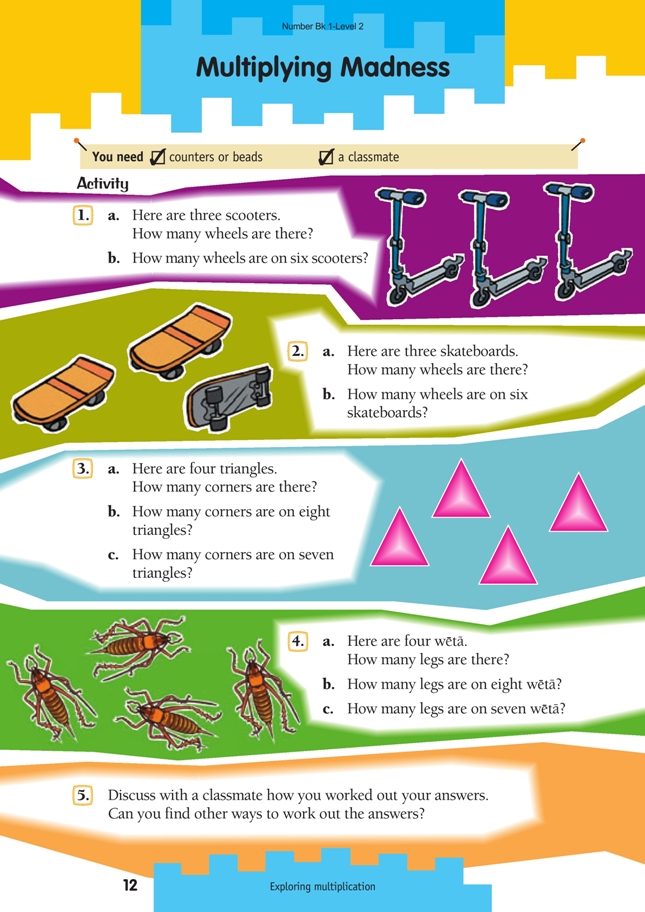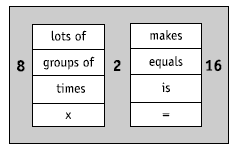This is a level 2 number activity from the Figure It Out series. It relates to Stage 5 of the Number Framework.
A PDF of the student activity is included.
Click on the image to enlarge it. Click again to close. Download PDF (191 KB)
explore multiplication and division using repeated addition and skip counting
FIO, Level 2, Number, Book 1, Multiplying Madness, page 12
classmate
These problems involve some basic multiplication facts from the 3 and 4 times tables. The students could solve part a of each question by using counting strategies with the illustrations, but they will need to use a range of strategies to answer the later parts of the questions. As the students begin to develop an understanding of multiplication, they will use their basic addition facts. Doubles are particularly useful here. For example, to find out how many corners there are on four triangles, the
students might use double 3 to find the corners on two triangles and then double again (for four triangles), giving 12 corners altogether.
Other prior knowledge that the students will bring to multiplication is skip-counting in twos, fives, and tens. Make the connection between skip-counting and the multiplication tables explicit for the students. Highlighting multiples on a hundreds board – or even on a thousands chart to really emphasise the patterns – is one way to help the students make this link.
For question 3b (How many corners are on eight triangles?), the students might use a combination of doubles and/or repeated addition:
So eight lots of 3 makes 24, or 8 x 3 = 24. An even more efficient strategy would be to double the answer to 3a.
To solve question 3c, the students’ strategies might include:
• repeated addition
• doubles
• eight lots of 3 (which they have just solved in 3b) minus 3.
The students can use similar strategies for question 4c.
The special characteristic of these types of addition problem is that each addend is the same; the groups are all equal. The students will initially record the repeated addition equation and will later move to using the mathematical shorthand for multiplication problems.
The table below shows various terms and symbols that are often used in multiplication. As you introduce the various terms to the students, you could add them to a class chart. The students could illustrate the chart with pictures showing eight groups of 2 (in contexts that have meaning for them).
Answers to Activity
1. a. 6
b. 12
2. a. 12
b. 24
3 .. a12
b. 24
c. 21
4. a. 24
b. 48
c. 42
5. Practical activity


